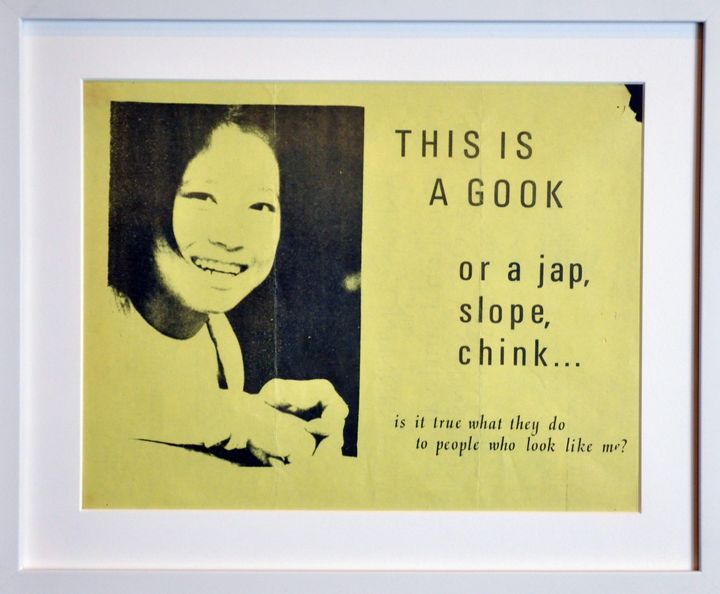
One interlocutor on Twitter said he would “sock” her right in her “lesbian face.” Another wrote, “Shut the fuck up you dog eating gook.” These were just two reasons for Sarah Jeong, the newest member of The New York Times’ editorial board and the subject of a ferocious right-wing fake-outrage campaign, to be angry. And for all the condescension of its statement in support of her, the paper got one thing right: Jeong’s anger is merited.
“Her journalism and the fact that she is a young Asian woman have made her the subject of frequent online harassment,” the Times’ communications Twitter account said in a statement, addressing the old tweets by Jeong, newly resurfaced, in which she waxes ironic about white people. “For a period of time she responded to that harassment by imitating the rhetoric of her harassers. She sees now that this approach only served to feed the vitriol that we often see on social media. She regrets it, and The Times does not condone it.”
“Yes, the Times admonished Jeong in an unsurprisingly exacting and patronizing way, but it also sent a message: An angry Asian person has a right to their rage.”
Yes, the Times admonished Jeong in an unsurprisingly exacting and patronizing way, but it also sent a message: An angry Asian person has a right to their rage. This matters because Asian-Americans have historically been told that our rage isn’t our due.
Ellen D. Wu, an Asian-American historian, author and professor, has written about a period during World War II when Americans became worried that the Chinese Exclusion Act ― the first law to ban an entire ethnic group from immigrating to the U.S. ― could strain U.S. ties with China at a time when they were allied against Japan. Subsequently, American groups worked to repeal the law by conjuring a new public image of Chinese people. They were now, Wu wrote in the Los Angeles Times, a “law-abiding, peace-loving, courteous people living quietly among us,”
And the stereotype of obedience stuck. In 2016, Karin Wang, a former executive at Asian Americans Advancing Justice, told The New Republic, “It’s easier to target Asians because it seems safer. It’s a community that’s viewed as less likely to rise up en masse and speak out.”
While Jeong’s tweets for the most part have been willfully misinterpreted by chuckling online opportunists, surely at least some of the outrage is due to the belief that Asians are supposed to be docile, even about racism. We are supposed to just forbear. Asians are successful, the argument goes; Asians benefit from their adjacency to whiteness ― as if that inoculates us against racism.
The responses to the Times’ statement was the standard mix of white grievance. People wondering what would happen if her tweets replaced “white” with any other race or ethnicity — i.e. the usual flattening of hierarchies by the “reverse racism” crowd. People who would never subscribe to the paper, vowing to unsubscribe. People named Andrew Sullivan.
In fact, Sullivan’s presence, asserted via New York Magazine’s website, was a sign: While the alt-right and their online cohort may have been leading the charge, the campaign had spread to the mainstream.
“The ginned-up outrage about Jeong is disheartening, but the upshot of it was something unexpected: Asian anger, ratified by the voice of the American establishment.”
That’s why The New York Times’ response was necessary, however flawed it might have been. It rejected the conflation of Jeong’s anger and actual racist resentment. Her tweets weren’t even intended to cut down white people themselves; they were lampooning the fact that there is actually nothing she could say that could threaten white institutional power.
As Zack Beauchamp, a senior reporter at Vox, points out: “A lot of people on the internet today [are] confusing the expressive way anti-racists and minorities talk about ‘white people’ with actual race-based hatred, for some unfathomable reason.”
Jeong makes fun of “Breaking Bad” and satirizes the racist belief that white conservatives have espoused about the genetic inferiority of other races and ethnicities. “Are white people genetically predisposed to burn faster in the sun, thus logically being only fit to live underground like groveling goblins?” Jeong tweeted, nodding to the biological determinism of racist works like “The Bell Curve” (infamously excerpted by Sullivan in The New Republic in 1994). “Oh man it’s kind of sick how much joy I get out of being cruel to old white men,” tweeted the Asian-American woman who was called a “gook” ― a derogatory term that was popularized during America’s military adventurism in Korea and Vietnam in the mid-20th century.

That The New York Times stood behind her anger means something to Asians. There are, of course, other outlets for Asian anger, but they aren’t mainstream. There is the original online purveyor, Angry Asian Man. Founder Phil Yu’s motto is “stay angry,” and one of his canonical questions when he features readers is “What makes you angry?”
Emma Sulkowicz, an Asian-American artist known for carrying a mattress across Columbia University’s campus as a visual reminder of her alleged rape, talked to HuffPost about where Asian anger comes from.
“There’s a lot of racism we have to deal with. Why are we angry Asians? It comes from a place of being stepped on. There is a level of invisibility we have.”
The ginned-up outrage about Jeong is disheartening, but the upshot of it was something unexpected: Asian anger, ratified by the voice of the American establishment.
